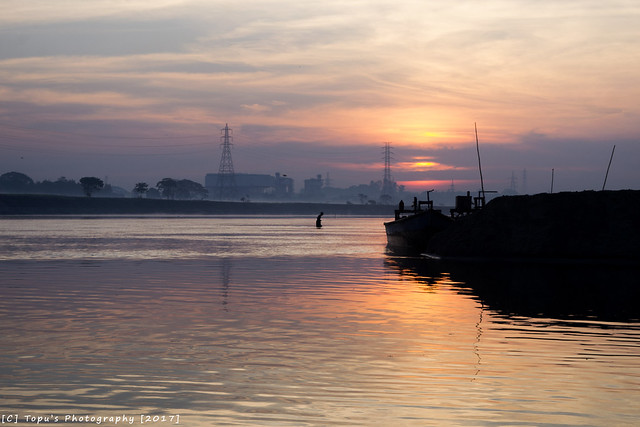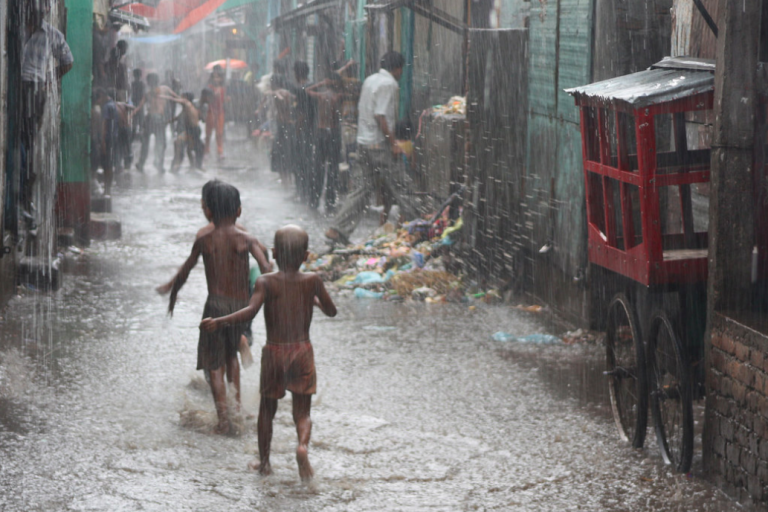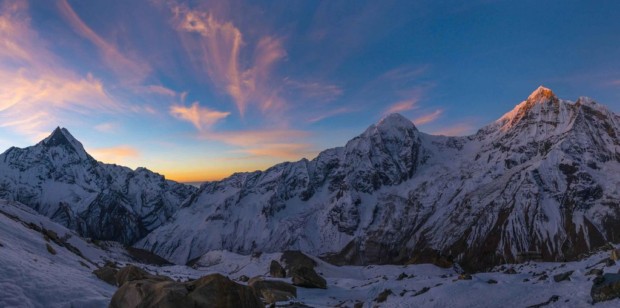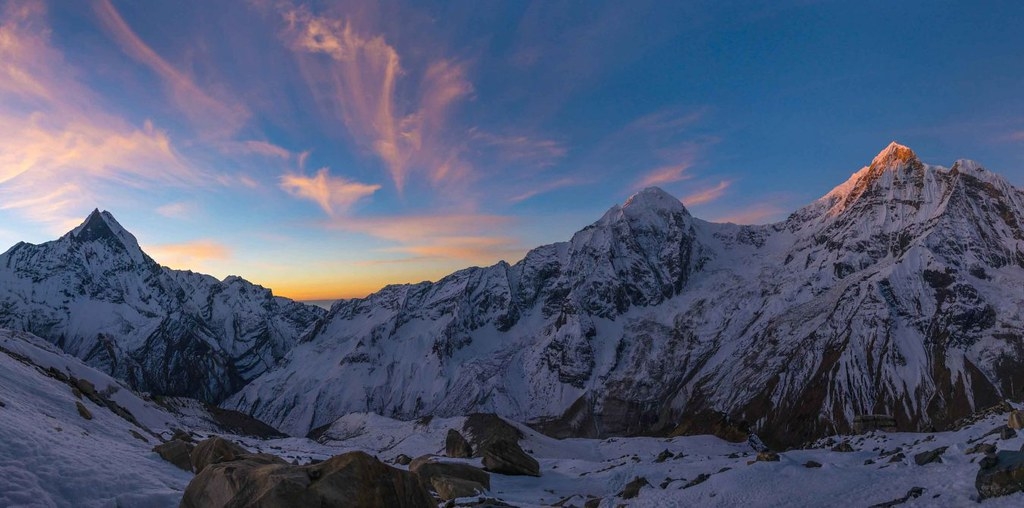South Asian Perspectives on News of Rapid Himalayan Glacier Melt
The “Third Pole” glaciers of the Himalayas feed into the major rivers of South Asia, providing vital freshwater. This resource is essential to the development of national and local communities and economies.
With global warming, the Himalayas, along with several other glaciated regions across the planet, are expected to experience a drastic reduction in ice mass and rapidly retreat. A new study tracing Himalayan glacier melt from 1975 to 2016 found that the melt rate has actually doubled since the turn of the century, suggesting a heightened risk of flooding for vulnerable regions.
The study, published in the journal Science Advances, was conducted by Columbia University Lamont-Doherty Earth Observatory Ph.D. candidate Joshua Maurer. Maurer and fellow researchers from Columbia University and the University of Utah examined satellite images to detect changes from the periods of 1975-2000 and 2000-2016.
This new study received international recognition and gained media attention across several South Asian countries, including Bangladesh.
Bangladesh is a riverine country where three of the major rivers in the region—the Ganges, Meghna, and the Brahmaputra—converge and fan out to the Bay of Bengal. These rivers which feed off of Himalayan meltwater provide much-needed freshwater for irrigation, drinking, and other needs.
How might this news impacts the country’s water system?
Bangladeshi perceptions of the study
An AFP article published in The Daily Star, one of the leading English-language Bangladeshi news outlets, asserts that the rapid retreat outlined in the new study threatens the water supply of hundreds of millions of people living downstream across South Asia. It mentions additional contributions to melt aside from temperature, which the study emphasizes as the leading cause of the region’s glacier melt. “Other factors the researchers blamed were changes in rainfall, with reductions tending to reduce ice cover, and the burning of fossil fuels which lead to soot that lands on snowy glacier surfaces, absorbing sunlight and hastening melting,” AFP reported.
UNB and bdnews24 also covered the study. Joseph Shea, a glacial geographer from the University of Northern British Columbia, told bdnews24 that the melting will lead to changes of timing and magnitude of streamflow in a heavily populated region.
UNB highlighted the study team’s ability to fill critical data gaps by utilizing US spy satellite images to calculate Himalayan ice mass in previous decades. NASA climate scientist John Willis commented that the study’s models provided confirmation of what scientists suspected, which was that warming was the main culprit to extensive melt.

A photo of the Brahmaputra river, the longest river passing through Bangladesh, taken in Mymensingh, Bangladesh (Source: Topu Saha/Flickr)
Glacier contribution to Bangladesh hydrology
GlacierHub interviewed Saleemul Huq, renowned Bangladeshi climate scientist, IPCC author, and director of the International Centre for Climate Change and Development (ICCCAD). Huq provided some general views on the recent news and spoke about the relevance to Bangladesh’s water systems.
“Bangladesh’s Ganges-Brahmaputra-Meghna river basin is highly complex,” Huq said. “Glacier melt makes an important contribution to rivers in dry areas where there is very little rainfall. However, as soon as the monsoon starts, glacier ice melt becomes incomparable to the contribution by heavy monsoon rains.”
He added that the loss of the glacier overall will impact Bangladesh in the future, yet the immediately increased glacier outflow into the rivers does not heavily effect the hydrology, particularly for the downstream regions.
Huq said Bangladesh is currently working on some techniques to improve water availability and security for dry seasons, which are expected to become longer with climate change. Some methods include creating barrages, river dredging, and rainwater harvesting.

The monsoon season (typically June to October) brings nationwide flooding to Bangladesh (Source: Martien van Asseldonk)
Other regions of South Asia
Pakistan media sources, including the Daily Times PK and The Express Tribune, among others, also covered the news. One story published by The Nation PK mentions that, in the long term, millions of people who depend on glacier water during drought years will experience difficulties. In addition, scientists say that the rapid melting of the Himalayas can also result in flooding. This flooding will be exacerbated by heavy monsoon rains.
Business World India connects the news about the Himalayas with drying taps in Chennai. The greatest impact is said to be in the Indus River system, which is comprised of the Indus, Jhelum, Chenab, Ravi, Beas and Sutlej rivers and is shared by India and Pakistan. The Indus river itself receives about 40 percent of its flow from glacier melt.
Already India is suffering from water management issues, and the taps and reservoirs of Chennai are all dried up. In addition to the current weak monsoon and excessive groundwater extraction, future loss of the Himalayas will make the country even more water-stressed.
Check out this video by The Quint, a popular news website in India, which emphasizes the impacts of Himalayan glacier melt in Asia.
A Silent Threat: Himalayan Glaciers Melting at Double the Speed | The Quint
Read more on GlacierHub:
Ancient Humans of Glaciated Western China Consumed High-Potency Cannabis
Roundup: Alaska’s Heat Wave, Black Carbon in Tibet, and Artwork at The Met
Photo Friday: Totten Glacier Twitter Feed is Pun-derful
source by: https://glacierhub.org/author/nabilah-islam/




comment 0